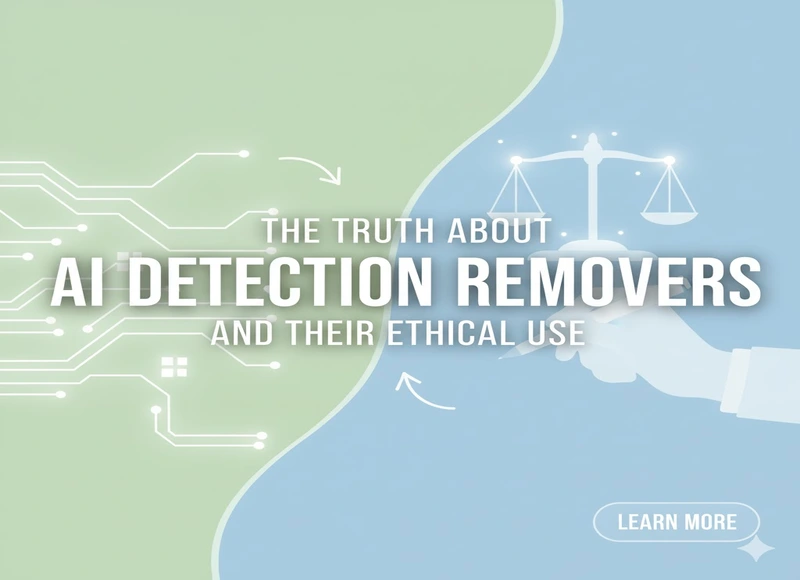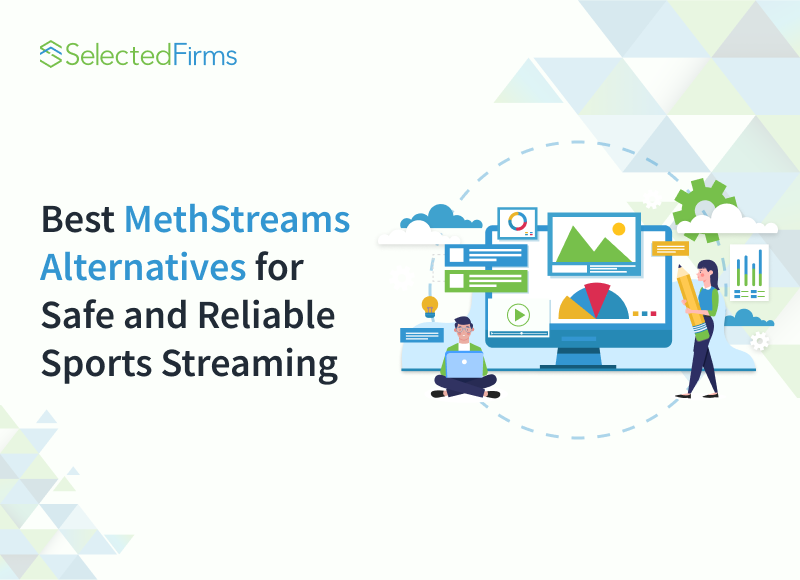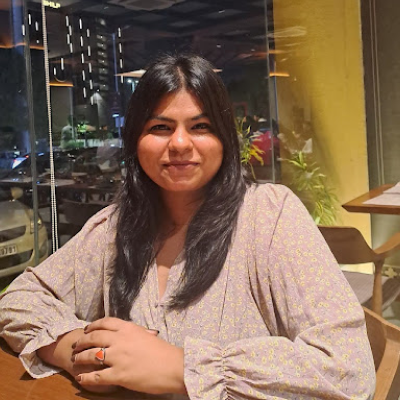Table of Contents
AI detection tools and “humanizers” are battling for digital authenticity. This article examines the ethical questions behind AI detection removers and what our obsession with authenticity really means.

Not Just Who Writes It, But Why It’s Written
The rise of AI-generated content has sparked a digital arms race between writers, platforms, and detectors. For every new tool that helps polish and humanize AI drafts, there’s another detector aiming to call it out. But amid all the discussion about how to catch AI, a more philosophical question is being overlooked: why are we so obsessed with detecting it in the first place?
And more importantly, what are we willing to sacrifice in the name of “authenticity”?
The Case for Detection and Its Moral Blind Spots
From universities to newsrooms, AI content detectors are being introduced to maintain quality and preserve trust. If a student submits a paper written entirely by ChatGPT, that violates academic integrity. If a blog post misleads readers by pretending to be human insight, that undermines editorial credibility.
The reasoning sounds valid. But the application? Not always.
False positives happen: Human writers, especially non-native English speakers, are sometimes flagged as "AI-sounding."
Context is ignored: Not all AI use is deceitful. Some writers use tools for structure, grammar, or pacing, not deception.
Ethics gets outsourced: If we trust the detector more than the reader’s judgment, are we solving the right problem, or just automating bias?
Fairness, Access, and Language
Not everyone writes inside the same box. Some people think in another language first, then shape it into English. Others rely on assistive tools because of disability, time, or plain anxiety. If the line between “human” and “machine” is drawn too hard, it erases those contexts.
Detection without nuance can end up punishing the very people who are trying to participate. The goal should be inclusion. Let writers explain how they used tools. Let reviewers read with that in mind. If the message is clear and honest, maybe the process deserves grace.
So the better test is not “Does this trip a wire,” but “Does this communicate meaning that belongs to the author?”
Who Really Owns the Idea of ‘Original’?
Ask ten editors what makes a piece of writing original, and you’ll get ten answers: voice, perspective, structure, and emotion. But none of those things are exclusive to humans anymore.
Tools like ai remover from text, for instance, can analyze patterns that feel robotic or templated, but even that’s based on statistical inference, not soul.
If an essay written by an AI conveys all the appropriate messages and resonates with readers, does who authored the text matter? These tools can help ethically improve a draft generated by an AI while maintaining transparency and authorial intent.
Maybe the better question is: what is the intent behind the text? Did someone use AI to deceive or simply to communicate more clearly?
Teachers, Writers, and the Trust Deficit
Much of the debate centers around education. Teachers are understandably frustrated by students using AI to game the system. But how do you teach writing in a world where the machine is part of the pencil?
One professor we spoke with anonymized student assignments and ran them through multiple detectors. The results were inconsistent. "It made me question whether I was grading the writing or grading the detector," she said.
The solution isn’t more punishment, but more transparency. Some platforms are already pushing the conversation forward by encouraging ethical use and providing tools to cite, paraphrase, and humanize AI output instead of disguising it.
From Bans to Briefs: Designing Work for AI-Assisted Writing
Blanket bans are easy to post on a wall and nearly impossible to live with. They also dodge the real task, showing people how to think with a system without letting the system think for them.
Start by changing the assignment itself. Design briefs that make judgment visible. Ask for a short process note with every draft. What did the model generate? What did the writer keep? What did they cut, and why? Which parts were rewritten by hand? Force the reasoning to leave a trail.
Rubrics can reward that trail. Grade the claim, the evidence, the synthesis, the clarity, and the process. Give credit for revision choices, not just for clean sentences. If the model supplied a paragraph, did the writer verify facts, reframe the structure, or add context that the model missed? When the scoring values decisions, the machine becomes a tool, not a substitute.
Build a simple set of artifacts. A first pass, a marked second pass, a final version. A paragraph of reflection on the trade-offs made between them. If time allows, add a brief oral defense or a two-minute screen capture walking through sources and edits. Small, concrete checkpoints make cheating harder and learning clearer.
Be explicit about boundaries. Cite when AI-shaped outline or wording. Require human verification for claims, numbers, and quotations. Prohibit fabricated sources. Encourage style in the author’s own voice. Keep a house rule for when AI-generated passages require extra scrutiny. Ambiguity is where resentment grows, so remove it.
Teachers and editors can still use detectors, but as instruments, not judges. A flag is a prompt to look closer at the process notes and drafts. If the notes are thin and the revisions are invisible, there is a problem with the work. If the reasoning is present and the sources are sound, the tool has done its job, and so has the writer.
This does not excuse copying. It recenters thinking. The output still matters. The path to it matters too, because that path is where authorship lives.
The Detectors Are Learning, But So Are We
AI detector aren’t static. They improve, adapt, and iterate. But so do writers. Many content creators now use AI and then use tools AI Content Detector to test and refine what they’ve made. This isn’t cheating. It’s awareness.
The best writers have always revised their work. Now they just have new collaborators: machines, detectors, and ethical guidelines.
Surveillance vs. Stewardship
There’s a difference between accountability and control. When we police AI-written content too aggressively, we risk treating all writers as guilty until proven human.
And if we normalize that mindset, we chip away at the trust that makes good communication possible in the first place.
Ethical use of AI isn’t about rigid detection – it’s about clear standards, open conversations, and tools that support growth, not just compliance.
Disclosure That Builds Trust, Not Fear
If readers only discover AI after the fact, trust takes a hit. If they are told up front, trust can actually grow. Disclosure does not need to be a scarlet letter. It can be a simple line: “Assistance used for outline and grammar; all claims and examples verified by the author.”
Teams can adopt lightweight norms. A short note in the footer. A version log for major edits. A house style for when AI-generated passages require human verification. Over time, that transparency becomes part of the brand, the class, the newsroom.
The aim is stewardship. Not surveillance, not secrecy. Clear signals about how the work was made, so the audience can decide what to value and why.
Are We Even Asking the Right Questions?
We’ve spent months asking, "Can detectors catch AI?" when perhaps the better inquiry is, "What are we hoping to preserve?"
Is it true? Authenticity? Voice? Trust?
Because if those are our goals, then we need to look beyond surface-level detection and build a framework that supports ethical creation regardless of the source. That includes teaching students how to use tools responsibly. That includes giving writers the means to refine AI output, not fear it. Also, the inclusion of platforms that create both detectors and humanizers – not as contradictions, but as complements.
The Question That Lingers
We are standing at a strange intersection: machine fluency, human creativity, and algorithmic judgment. The answers aren’t obvious. They’re negotiated, inch by inch, in classrooms, newsrooms, and comment sections. That arms race matters, but it isn’t the whole story. Detectors will keep getting sharper. Writers will keep getting smarter.
Before we ask “Is this AI writing?” we should consider a few quieter questions first. Does this text present the reality it claims to? Can you see the choices the author made, even if a tool helped? If your thinking shifts or you gain language you didn’t have, does the method outweigh the value?
Tools won’t decide that for us. People will. A teacher who asks for process notes instead of gotchas. An editor who invites disclosure instead of punishment. A writer who keeps the messy sources, drafts, and revisions so the reader can follow how the idea took shape. That is how trust is built: not by hiding the machinery, but by showing the work.
If a detector catches a lie, good. If it flags a voice that never had a chance to sound human, we should fix the system, not the person. And when a piece helps, informs, connects, and challenges, we can let that count. Not as a loophole, but as a standard.
Because in the end, authorship is responsibility. If you put your name on a page, you own the claim, the evidence, and the impact. A model can be drafted. A detector can warn. Only a human can stand behind the words. That, more than anything, is the line worth protecting.
Recent Blogs
12 Best MethStreams Alternatives for Safe and Reliable Sports Streaming in 2026
-
18 Dec 2025
-
12 Min
-
36
Real World Digital Transformation Use Cases in Real Estate, Tech, and Recruiting
-
17 Dec 2025
-
6 Min
-
144








